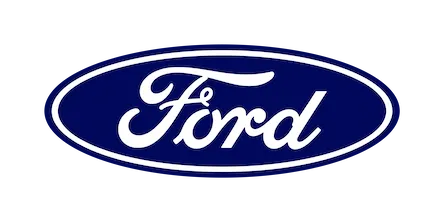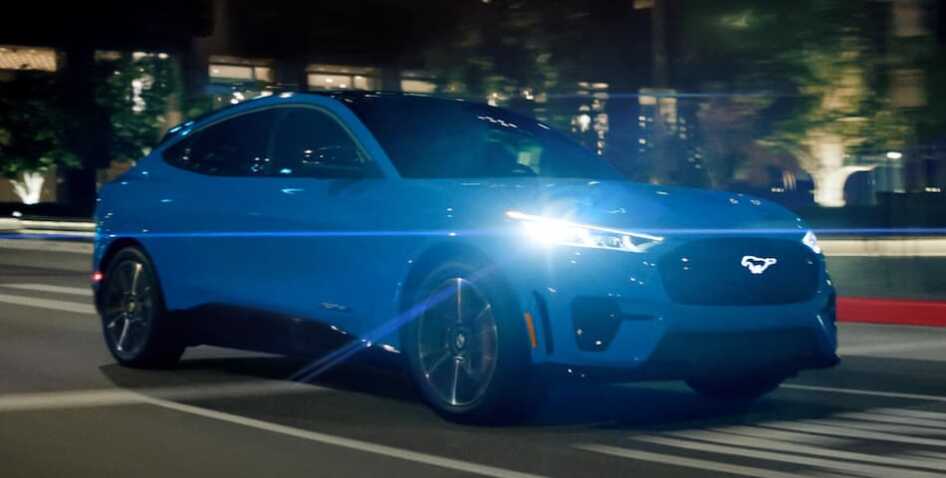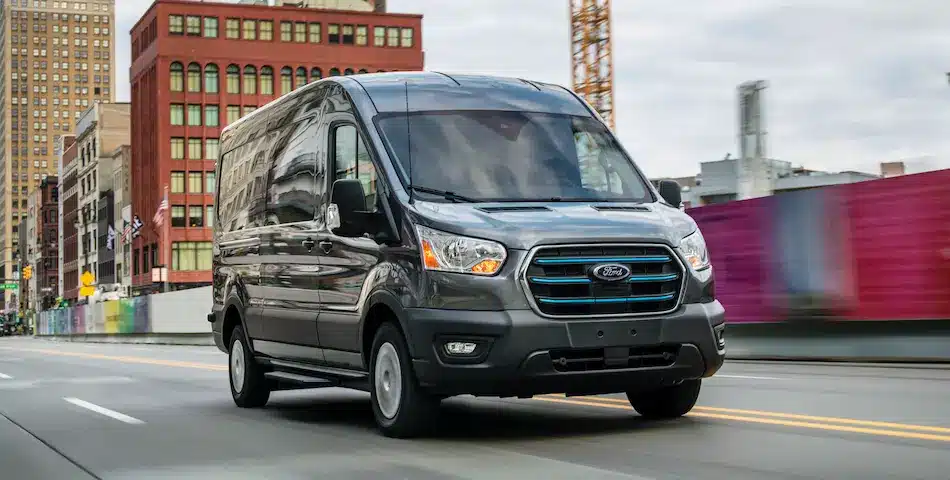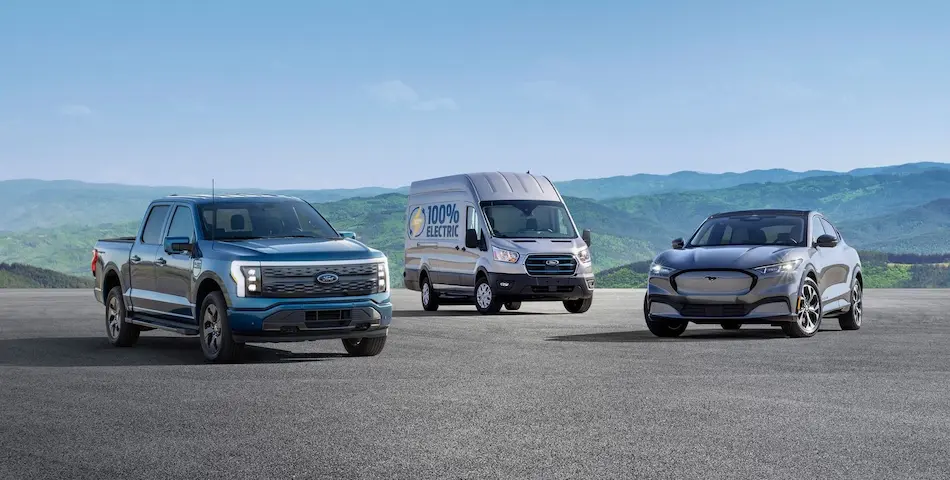Ford electric vehicles are a growing part of the company’s portfolio, building on its legacy of innovation and manufacturing expertise. As of 2024, Ford’s EV lineup consists of the Mustang Mach-E, F-150 Lightning, and E-Transit. With a significant investment in electrification efforts, Ford is transitioning its portfolio to include a range of electric vehicles.

| Ford | |
| Founded: | June 16, 1903 |
| Founders: | Henry Ford |
| Employees | 176,000 (as of 2023) |
| Headquarters: | Dearborn, Michigan |
| Manufacturing (Electric Vehicles): | North America and Europe |
| IPO: | 1956 |
| EV Models: | Mustang Mach-E, F-150 Lightning and E-Transit |
| Federal Tax Credit Eligibility: | Yes, depending on the model and options |
Ford’s Vision and Mission
Ford aims to lead the electric vehicle revolution by electrifying its most iconic nameplates and creating new all-electric models. The company’s mission is to provide sustainable mobility solutions that are accessible to a wide range of customers while maintaining the performance and capability Ford is known for.
The Evolution of Ford: From Mass Production Pioneer to Electric Innovator
Ford has a rich history dating back to 1903 when Henry Ford founded the company. Ford revolutionized the automotive industry with the introduction of the moving assembly line and the Model T, making cars affordable for the average American. Over the decades, Ford continued to innovate with iconic models like the Mustang, F-Series trucks, and the GT40 race car.
As the automotive landscape evolved, Ford adapted to changing consumer preferences and environmental regulations. The company introduced hybrid vehicles in the early 2000s with the Escape Hybrid. In 2021, Ford entered the all-electric market with the Mustang Mach-E, and followed with the F-150 Lightning in 2022.
Ford plans to invest over $50 billion in electrification efforts through 2026. As Ford focuses on the next wave of electric vehicle shoppers, the company is working on lower-cost electric vehicles that are more affordable. This strategy aims to broaden the appeal of EVs to a wider range of consumers and accelerate the adoption of electric vehicles in the mass market.
Ford’s Current & Upcoming Electric Vehicle Lineup
Ford’s EV lineup combines the company’s heritage of performance and capability with advanced electric powertrains

Mustang Mach-E
Ford’s first all-electric SUV, the Mustang Mach-E, offers a range of up to 320 miles (EPA-estimated) and comes in various trims including Select, Premium, GT and GT Rally Edition. It features a sleek design, spacious interior with a large touchscreen, and impressive performance with up to 480 horsepower in the GT Rally Edition.

F-150 Lightning
The all-electric version of America’s best-selling truck, the F-150 Lightning offers up to 320 miles of range (EPA-estimated for Extended Range battery), powerful dual-motor all-wheel drive, and innovative features like Pro Power Onboard. It maintains the F-150’s renowned capability with a maximum payload of 2,235 lbs and up to 10,000 lbs of towing capacity.

E-Transit
Ford’s commercial all-electric van, the E-Transit, is designed to meet businesses’ needs. It offers various configurations and an estimated range of up to 126 miles. It also offers mobile power for tools and equipment, making it ideal for various commercial applications.
Electric Design and Engineering
Ford’s EVs are built on dedicated electric platforms, offering impressive performance and range. The Mustang Mach-E and F-150 Lightning utilize Ford’s Global Electrified 1 (GE1) platform. Future models will likely use the upcoming GE2 platform. These platforms allow for flexible battery sizes, motor configurations, and vehicle types.
Ford is also investing heavily in battery technology and production capacity. The BlueOval City complex in Tennessee and other battery plants will support Ford’s goal to broaden the appeal of EVs to a wider range of consumers and accelerate the adoption of electric vehicles in the mass market.
Brand Highlights and Differentiators Performance
Performance: Ford continues its performance legacy with its EVs. The Mustang Mach-E GT Rally Edition can accelerate from 0-60 mph in 3.4 seconds, and the F-150 Lightning offers up to 580 horsepower and 775 lb-ft of instant torque.
Innovation: Ford EVs integrate advanced technologies like BlueCruise hands-free highway driving system, SYNC 4A infotainment, and over-the-air software updates.
Capability: The F-150 Lightning brings Ford’s truck expertise to the EV world, offering features like Pro Power Onboard that can power tools, appliances, and even homes during outages.
Strategic Partnerships
Ford has been forging strategic partnerships to enhance its electric vehicle offerings and improve the ownership experience for its EV customers. In a groundbreaking move, Ford partnered with Tesla to expand charging options for Ford EV owners. This collaboration will allow Ford EV owners to access Tesla’s extensive network of Superchargers across North America. Existing Ford EVs will use an adapter to access these chargers. Future models starting in 2025 will incorporate Tesla’s North American Charging Standard (NACS) connector, eliminating the need for an adapter. This partnership significantly expands the charging network available to Ford EV owners, addressing one of the primary concerns for potential EV buyers – charging infrastructure.
Manufacturing and Market Strategy
Ford is leveraging its global manufacturing footprint to produce EVs, with plants in North America and Europe being retooled for electric vehicle production. The company is also establishing new EV-specific facilities like BlueOval City.
Ford’s EV strategy targets both mainstream and performance-oriented customers. By electrifying iconic nameplates like the Mustang and F-150, Ford aims to appeal to brand loyalists while attracting new EV-curious buyers. The company is positioning itself as a leader in electric trucks and commercial vehicles, leveraging its strong presence in these segments.
Challenges and Opportunities:
Challenges:
- Intense competition from both established automakers and EV startups
- Supply chain constraints, particularly for batteries and semiconductors
- Balancing the transition to EVs with continued production of ICE vehicles
Opportunities:
- Leveraging brand loyalty and iconic nameplates to drive EV adoption
- Expanding into new markets and segments with EV offerings
- Developing new revenue streams through connected car services and over-the-air updates
Electric Driver Conclusion: Ford Electric Vehicles
Ford is leveraging its rich automotive heritage and iconic nameplates to drive its ambitious electrification strategy. By combining performance, innovation, and capability with sustainable electric powertrains, Ford is positioning itself as a leader in the EV transition. Ford’s success with the Mustang Mach-E and F-150 Lightning showcases their ability to create popular electric vehicles. As Ford continues to expand its electric lineup and invest in battery technology and production capacity, it can shape the future of electric mobility.
